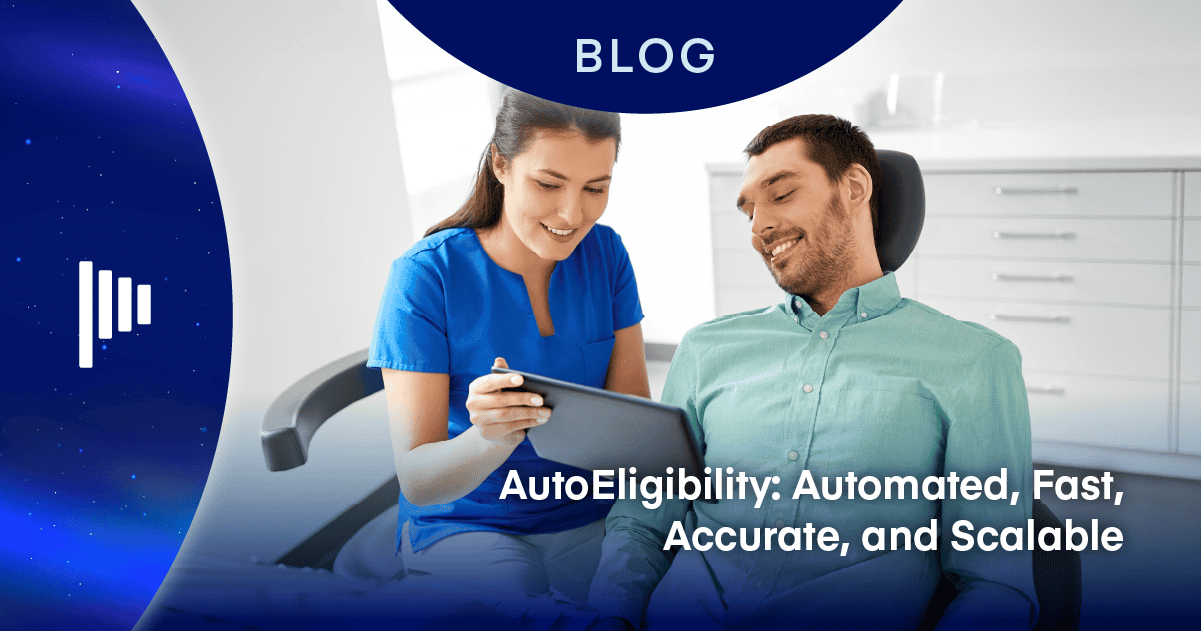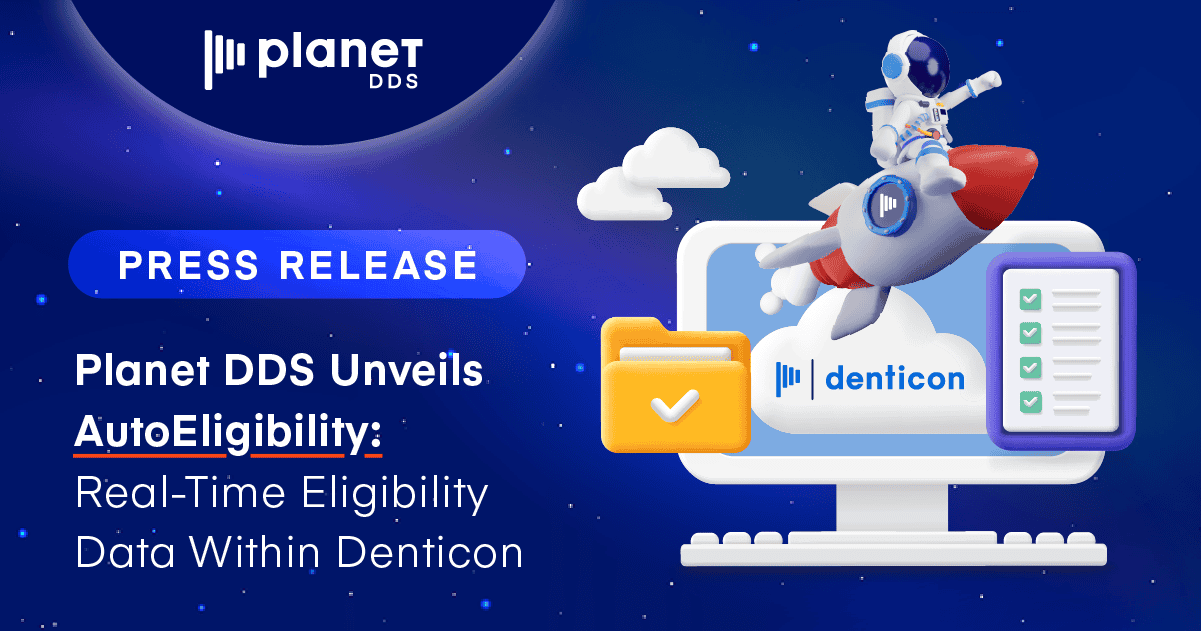The Hidden Costs of Outdated Dental Practice Management Software

While dental support organizations (DSOs) and dental groups continue to invest in technology, legacy software remains in use across many organizations, often due to familiarity or perceived switching costs.
In growing dental organizations, outdated dental practice management software can introduce hidden liabilities like hardware failures, limited remote access, manual software updates, and mounting IT support that steadily inflate overhead costs.
A Dental Economics study found that server-based systems, long considered standard in the industry, carry steep upfront costs and recurring expenses of $400 to $700 per month ($4,800 to $8,400 annually) for maintenance, IT support, and hardware.
Modern DSOs and dental groups are rethinking this model. Cloud-based dental practice management systems now offer direct access to critical functions like cybersecurity, revenue cycle management (RCM), and real-time analytics, without the burden of maintaining physical infrastructure or unwanted operational expenses.
This article explores the often-overlooked costs of legacy systems and how scalable, cloud-based platforms can support more efficient operations and long-term growth.
IT Support and Maintenance Costs
Modern DSOs and dental groups recognize that relying on aging technology can limit their growth. Disconnected tools, inconsistent support, and obsolete features slow down operations and make it harder to scale.
These recurring expenses are common for organizations still relying on traditional platforms:
- Monthly maintenance plans: On-premise systems often require ongoing software patching, security updates, and version control. HIPAA compliance, ADA code updates, and insurance regulations demand a reliable vendor support contract to keep systems current.
- Emergency IT support: Server crashes, malware, or data corruption typically require high-cost emergency IT services. These disruptions can affect scheduling, billing, and day-to-day operation, introducing risk into otherwise standardized workflows.
- Licensing for third-party tools: Many systems lack integrated imaging, patient communication, or digital form tools, requiring extra licensing for tools that modern platforms typically include natively.
- Unplanned hardware replacements: Older software is often incompatible with newer operating systems. Keeping these systems functional can require costly upgrades, sometimes resulting in tens of thousands in unbudgeted IT spending.
These IT challenges drain budgets and pull focus from patient care and growth, prompting many dental organizations to look for cloud-based solutions to avoid unwanted costs.
Cost benefits of cloud-based solutions
Cloud-based dental practice management software eliminates the need for local infrastructure, immediately reducing hardware costs and technical complexity.
Industry data revealed DSOs and dental groups that moved from on-premise to cloud-based dental practice management systems saved as much as 30% and 70%, depending on their prior infrastructure, significantly reducing their overhead.
Additional advantages of switching to a cloud-based system include:
- Predictable subscription costs: Cloud-based platforms operate on a pay-as-you-go model, making budgets easier to manage and eliminating surprise upgrade fees.
- No hardware dependency: With no need for in-house servers or storage, you can reduce the risk of hardware failure and simplify IT operations.
- Automated updates and compliance: Updates are centrally managed and deployed automatically. Cloud vendors ensure HIPAA compliance with enterprise-grade encryption, layered security protocols, and secure backups.
- Access from any location: Teams can securely access the platform from any device, supporting multi-location coordination and flexible staffing.
Cloud-based dental practice management solutions like Denticon are built for DSOs and dental groups, offering greater control and efficiency while eliminating the unpredictability. Find out how modern dental practice management software can help grow your business in our DSO and dental group growth guide.
Rising Staff Costs Using Outdated Systems
Fragmented dental software systems can increase operational burden and reduce staff efficiency. From duplicated data entry to communication breakdowns across locations, these issues often lead to redundant work, manual errors, and increased administrative overhead.
According to the American Dental Association (ADA), inefficient scheduling alone can cost dental businesses up to $150,000 annually, demonstrating how outdated systems can drive up labor costs for DSOs and dental groups.
Common workflow challenges include:
- Repetitive administrative tasks: Staff often re-enter the same patient or insurance data across separate systems, which increases the chance of manual errors.
- Fragmented modules: Using standalone tools for communication, claims, or imaging reduces efficiency and limits access to integrated performance data.
- Limited visibility: Without organization-wide oversight, it’s harder to coordinate across offices, leading to gaps in reporting and inconsistent patient experiences.
These challenges contribute directly to rising labor costs and prevent dental teams from focusing on more strategic, patient-facing care.
Cost benefits of centralized platforms
Modern dental practice management software centralizes workflows across departments and locations, giving you the tools to operate efficiently, reduce errors, and enhance staff-to-patient interactions.
Integrated dental software helps you simplify labor-intensive processes and improve coordination. Key advantages include:
- Automated claims submission: This feature cuts paperwork time by submitting insurance claims electronically and with fewer errors.
- Real-time insurance verification: This confirms patient eligibility instantly, improving copay accuracy and reducing denials.
- Integrated payment processing: The system speeds up collections and improves patient satisfaction with simple, secure transactions.
- Advanced reporting and analytics: This functionality tracks performance, highlights claim patterns and identifies efficiency or billing gaps.
- Security and compliance: Centralized systems simplify HIPAA compliance by securing all data in a single, controlled environment.
Cloud-based platforms like Denticon practice management support smoother operations and RCM automation across teams and locations, helping your business reduce labor costs, increase accuracy, and spend more time focused on patients. Learn more about software solutions in our RCM Automation Guide.
Reporting Costs and Poor Performance
DSOs and dental groups generate a constant flow of performance data, but when reporting systems are outdated, that data can often go underutilized. These systems rely on static snapshots, manual compilation, and inconsistent outputs that slow decision-making and obscure performance trends.
Common reporting challenges include:
- Lagging performance snapshots: Without up-to-date metrics, data falls behind operations, forcing teams to act on yesterday’s numbers.
- Manual data compilation: Staff often gather metrics from multiple systems by hand, increasing the risk of inconsistencies and consuming valuable time.
- Delayed trend recognition: Lacking automated alerts or timely insights, teams may miss early signs of issues like declining production or patient retention.
- Scattered insights across locations: When reporting tools aren’t unified, comparing performance across practices is time-consuming and error prone.
- No agility in decision-making: When reports are slow to generate and difficult to analyze, leadership can’t act quickly, costing both time and revenue.
Without timely, centralized reporting tools, your organization risks flying blind, unable to spot operational inefficiencies, optimize performance, or act on emerging opportunities.
Cost benefits of real-time reporting dashboards
Modern dental practice management platforms offer centralized dashboards that give you timely, actionable visibility across locations. With customizable reporting tools, teams can track performance, allocate resources, and uncover insights with just a few clicks.
Comprehensive dashboards surface business-critical patterns in everything from patient care to operational efficiency. Cloud-based systems unify that data into a single, live view for faster, more informed decisions.
Key benefits of integrated reporting platforms include:
- Track KPIs in real-time: Monitor metrics like production per provider, collections, and case acceptance, enabling proactive decisions and quick course correction.
- Spot retention trends: Analyze visit frequency, cancellations, and feedback to strengthen patient loyalty across your locations.
- Improve financial control: Get a full view of revenue, overhead, and profitability by location or provider, removing guesswork from budgeting.
- Enhance service quality: Evaluate treatment outcomes, compliance, and provider performance to support consistent care and training.
With Denticon analytics, you can gain a complete, real-time reporting solution, turning raw data into strategic insights that improve decision-making.
Costs That Hinder Scalable Growth
Growth is central to the success of DSOs and dental groups, but older dental software can make expansion more complicated. Without a connected platform, each location may operate on its own system, leading to inconsistent workflows, fragmented communication, and limited visibility across the organization.
Disjointed systems can’t support cohesive operations at scale, and these inefficiencies become more costly over time. Scalability challenges commonly tied to legacy software include:
- Slow update integration: Policy or treatment updates take longer to implement, increasing compliance risk and slowing down operations.
- Disjointed resource coordination: Without system-wide visibility, managing staff schedules, inventory, and equipment becomes time-consuming and inefficient.
- Data silos hinder strategic insights: When each office operates independently, leadership lacks the centralized data needed to track KPIs or plan for growth.
As your dental organization grows, older systems often become barriers, not supporting structures. Each new location adds layers of complexity that limit consistency, visibility, and control. Find out how you can scale successfully in our scalability guide.
Cost benefits of scalable platforms
Cloud-based dental practice management systems are purpose-built for multi-location growth. With configurable workflows, unified data access, and flexible deployment options, you can expand your business without sacrificing oversight or performance.
Modern platforms support consistent operations and control across your entire network, no matter how many locations are added. Key scalability benefits include:
- Simple onboarding: Add new practices and users without disrupting daily operations or requiring on-site installation.
- Standardized protocols: Apply consistent workflows, templates, and compliance rules across all locations.
- Customizable accounts: Let individual practices adjust local settings, such as hours or appointment types, while maintaining organizational standards.
- Personalized access: Securely view and manage data from any location through a single, centralized interface.
Investing in a flexible platform will give your DSO or dental group the tools it needs to grow with consistency, adaptability, and control during every stage of growth.
Integration Gaps That Add Operational Costs
Disconnected systems prevent interoperability required for efficient, scalable operations across DSOs and dental groups. Without integration between imaging tools, revenue cycle platforms, communication systems, and practice management software, workflows slow down, impacting daily operations.
APIs (application programming interfaces) are the standard for connecting modern systems. They allow data to move automatically and securely between platforms, supporting smoother coordination across clinical, operational, and financial teams.
Without API-powered connectivity, DSOs and dental groups often encounter challenges like:
- Delayed patient care: Imaging results or treatment plans may not flow efficiently to clinical teams, slowing diagnosis and decision-making.
- Billing inconsistencies: A lack of integration between practice management and RCM systems leads to billing delays, errors, and reimbursement issues.
- Limited innovation: DSOs or dental groups may be unable to adopt new tools, like AI diagnostics or virtual care platforms, without integration support.
- Vendor lock-in: Closed systems without open APIs can limit flexibility and increase costs by preventing organizations from switching or expanding tools.
When your systems don’t integrate, you risk relying on manual workarounds that increase complexity and reduce consistency across locations. APIs provide the synchronization needed to keep operations aligned and moving efficiently.
Cost benefits of API-ready platforms
Dental software with API support allows DSOs and dental groups to create connections between the tools they already use and easily adopt new ones as they scale. Open API platforms go a step further by enabling custom integrations that extend system capabilities, allowing your organization to build tailored solutions aligned with your specific needs and growth goals.
Key benefits of API-driven platforms include:
- Enhance system flexibility: Connect clinical and operational tools across your tech stack to create a more adaptive, scalable infrastructure.
- Improve accuracy: Eliminate manual data entry by syncing data across platforms, minimizing errors, and supporting consistent treatment outcomes.
- Integrate emerging tech: Add functionality like AI, teledentistry, or patient engagement apps without needing to replace existing systems.
- Foster collaboration: Enable vendors and developers to build new tools to expand functionality as needed.
Robust dental software like DentalOS™ offer open API capabilities and flexible integration, giving DSOs and dental groups the interoperability needed to stay agile, efficient, and ready to scale. Find out how DentalOS can help power your business.
Modernize Your Software. Eliminate Hidden Costs.
Dental organizations rarely outgrow their ambition, but outdated software can limit how far they go. What once felt dependable is now a common barrier, slowing teams down just when they’re ready to move forward. To grow without constraints, it may be time to rethink the systems holding your organization back.
Cloud-based dental practice management software gives DSOs and dental groups the flexibility to operate efficiently, supporting better coordination, fewer labor-intensive tasks, and instant access to the data that drives smarter financial decisions.
Ready to boost operations and reduce overhead? Talk to us about how our modern dental practice management solutions can support your business and growth goals.



